Throwback Thursday is when we trawl through the That's archives for a work of dazzling genius written at some point in our past. We then republish it. On a Thursday.
By Marianna Cerini and Tongfei Zhang
As the lights go down in the crowded hall of the Tianjin Haihe Theater, over 200 audience members – an assorted mix of children, the middle-aged and giggling young couples – fall into an expectant hush. Moments later, a lithesome woman clad in sky-high leather platforms, spandex shorts and a low-cut glittering bra appears on stage. Walking slowly but determinedly, she approaches a vertical pole.
If this were a strip club, she’d be pouting and batting her lashes. Instead, her face is tense and focused, her eyes transfixed by the metal post in front of her. Suddenly and without warning, she grabs hold of the pole and swings herself upward, before striking a pose two feet from the ground.
She is one of a dozen or so performers at China’s National Pole Dancing Show, an annual event held in the northern port of Tianjin that aims to promote one of the country’s newest – and perhaps most controversial – fitness practices.
READ MORE: An Interview with Shanghai's Premier Pole Dancer Lina Wang
Over the course of the next two hours, athletic and decidedly skimpily-dressed men and women take turns shimmying up the pole, contorting their bodies into gravity-defying stances.
Deadly serious and undeniably dedicated, they all show a sense of showmanship that has little to do with the raunchy gentlemen’s club image more commonly associated with pole dancing. The audience, for its part, sits in respectful awe.
First introduced to the country in the mid-2000s, the activity is nudging its way into China’s mainstream exercise and sport market, with increasing numbers of gyms and dance schools offering classes.
In 2011, an official China Pole Dance Sports and Training Center (CPDSTC) was established in Tianjin. With it came the creation of a professional, full-time Chinese national team consisting of some 16 men and women aged 20 to 30, who live and train on site. Pioneers in the discipline, they consider themselves to be professional athletes and are determined to help transform the public perception of their sport.
"We get fresh blood coming in every year. If any old member is lagging behind, he or she will get kicked out without a second thought"
At the Haihe Theater, it is these dedicated few who perform the show’s closing routine, a dramatic piece blending ballet, acrobatics and gymnastics. It’s a powerful, remarkable act.
“Pole dancing is an art form yet to be fully discovered,” says Yuan Biao, the team’s general coach, a few days after the event. “As a dance that includes movements both in the air and on the ground, it combines beauty and power like few other disciplines. If I were to define it in any way, that would be it: beauty and power.”
Yuan holds a pivotal role in efforts to ramp up the country’s competitive edge. A former lawyer, he gave up his career and later sold his house and car in order to help promote the sport full-time. Unable to secure Government funding, Yuan made contact with the World Pole Dancing Federation in 2010 to enquire about the possibility of holding a nationwide competition in the Chinese Mainland.
“Everybody around me thought I was completely crazy,” he says. “But I liked the challenge.”
Shortly after, the federation allowed him to organize the discipline’s first China Championships, in which contenders from across the country are selected for international-level tournaments. The contest, now in its fourth edition, attracts 100 to 200 participants each year.
Meanwhile, Yuan became the first and only Chinese judge at the annual World Pole Dancing Championships, a contest that this year saw contenders from 14 countries, including Argentina, New Zealand, Russia, Brazil and Cyprus, travel to the UK to compete in doubles, singles, men’s and women’s categories.
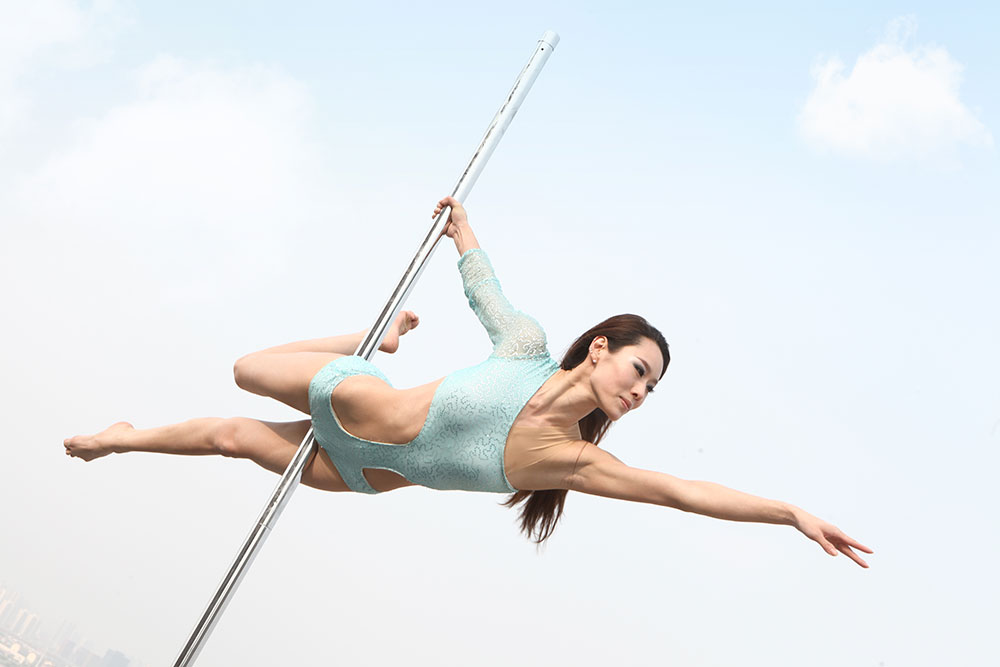

Meng Yifan displaying some seriously mind-boggling skills. Photos by Noemi Cassanelli
Chinese teams led by Yuan have participated in the event since 2012. Although victory remains elusive, the team has made notable showings and recently won awards for choreography and single performances. Yuan is confident that, by next year, they will make it into the world’s top three.
Back home, recognition has been slowly picking up. “It has been a tough run, but mindsets have changed enormously since we started,” he says.
Nonetheless, many Chinese disapprove of the sport’s sexual movements and continue to view pole dancing as unruly and licentious. In a society that traditionally dictates that women be loyal, faithful and modestly-dressed, public opinion still considers the discipline to be lowly and pornographic.
Still, the number of pole dancing courses held across the country suggests attitudes towards the sport are shifting, albeit slowly.
"What we do is a form of stage drama. It's serious work for us."
“It remains a sport for a select few,” says Meng Yifan, the national team captain. “But a lot of people change their views on it after watching us perform. What we do is a kind of stage drama – none of that sleazy stuff you see in bars or clubs. It’s serious work for us.”
Statuesque and slender, 30-year-old Tianjin native Meng has the appearance of a prima ballerina. Her abdomen is perfectly chiseled, her thighs toned and slim. As she ascends the pole during practice at CPDSTC, she appears fierce and effortless in her swift movements.
A childhood spent studying ballet, jazz and folk dance accounts for much of Meng’s athleticism. Her attraction to pole dancing, on the other hand, comes from the web. In 2005, she saw a video of a performance online which she says “completely opened my eyes.”
“I had this idea of pole dancing as an overtly sexual thing. Watching that video, however, I found it to be something else entirely. A dance form in its own right.”
As the CPDSTC did not yet exist at the time, Meng decided to teach herself the moves of the discipline. She bought a pole and installed it in her house and, once she honed her skills, filmed a video that she then submitted to the World Pole Dance Championship. The clip got her into the international tournament, making her the first Chinese citizen to be invited to the competition.
“That was 2010. I ended up not taking part because of visa issues. Before I applied for the 2011 contest, Yuan had founded China’s national team and we started attending as a group.”
Training for competitions, both local and international, takes serious commitment. Of the 16 team members – 11 female and five male dancers – only seven are allowed to enter international tournaments. The selection process is ruthless. Entrants are judged on a number of areas, from strength and aesthetic to performance and flexibility; the height of the pole and the duration of the song are also taken into account. Points are deducted mercilessly – a minor slip or a bent leg could cost a contender qualification to the next round.
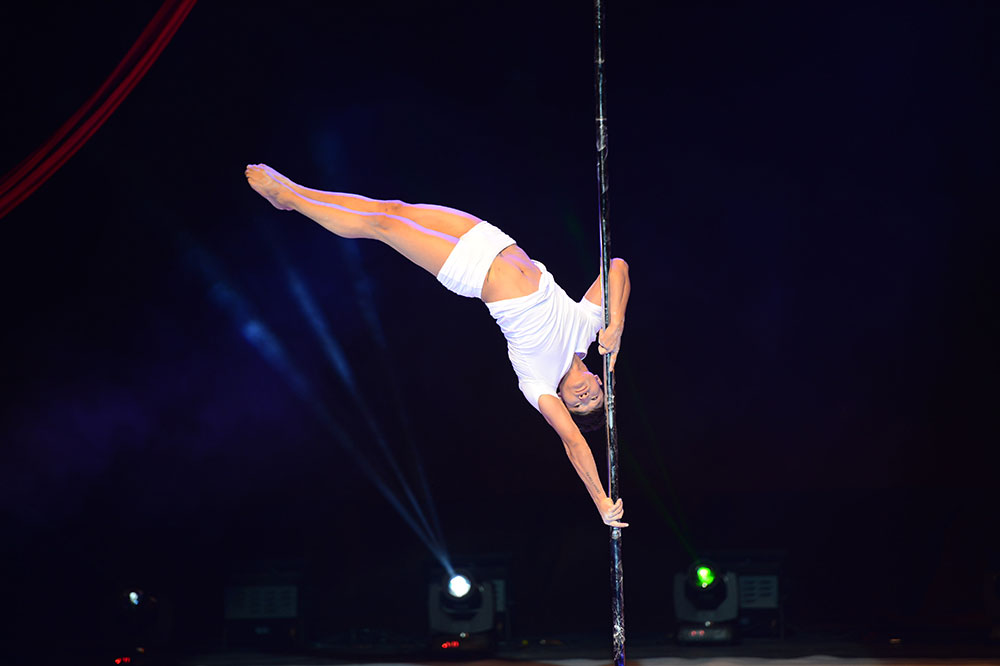
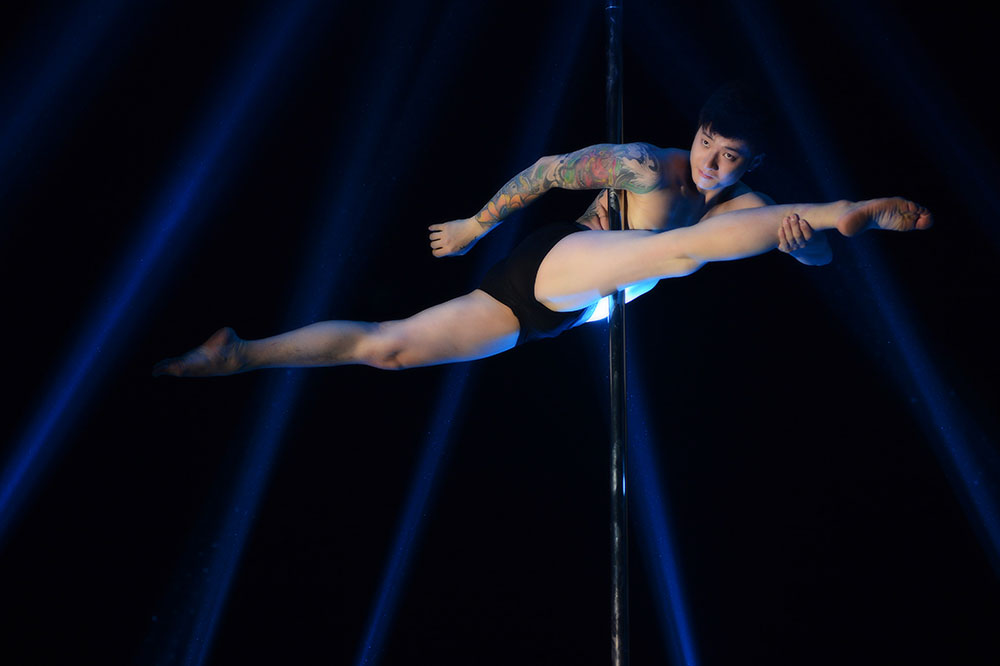
Male pole dancers in action
Clothing and dance styles are also scrutinized. In order to escape the sleazy undertones that often characterize non-competitive shows, official pole dancing contests have introduced strict rules about performers’ outfits. While legs and feet must be bare to grasp the pole, the standard uniform is shorts, T-shirt and special hand powder or gel to improve grip, although heels might be worn for specific acts.
At CPDSTC, most dancers teach classes during the day, while professional practice runs from 8pm to 11.30pm. Before major tournaments, these sessions can go on until two in the morning. Stamina and consistent performance levels are key. “We get fresh blood coming in every year,” says Yuan. “So if any old member is lagging behind, he or she will get kicked out without a second thought.”
A typical training session begins with stretches, followed by lifts, lunges, splits and extensive core-strengthening exercises. It’s a tough routine, culminating in pole moves that seem to defy gravity – athletes grip the metal stick with a single foot or several fingers, or launch themselves into high-intensity choreographed routines. As bodies tense in concentration, it’s common to spot purple bruises on the dancers’ thighs and bare feet. This is neither a forgiving sport nor one that is easy on the physique.
“I once fell from a three-meter-high pole and hit both my knees hard on the ground,” says Song Yao, who came second in 2011’s China Pole Dance Championship and is ranked number 17 in the world. “It took me almost a year to recover fully.”
One of the team’s latest additions Yan Xu, a strikingly tall, sculpted boy of 20, broke his collarbone in a similar accident. Both seem undeterred by such mishaps.
“Pole dancing is something that proves my worth and existence,” Yan says. “When we perform, it is as if we’re flying in the sky.”
The Beijing-born, athlete who first started pole dancing in 2008 after watching shows on the Internet, won last year’s China Pole Dance Championships and thus qualified to join the national team. Earlier this year, he came fifth in the world tournament.
READ MORE: 5 Ways to Piss Off a Male Pole Dancer
The achievement has propelled Yan’s confidence as a team member but has also proven decisive in his personal life. For the first time since starting to pole dance he has reconnected with his family, from whom he had previously been estranged because of the sport.
His case is not isolated. While the sport is gaining new credentials, its champions are keenly aware of the challenges they face in a society where traditional values prevail. For most pole dancers, dealing with and changing the preconceived notions of their loved ones has become part of the job.
Song didn’t tell her family about her training until she was ranked in the world championship. “They all thought I was trying to become a singer,” she recalls. “When my dad first saw me dancing on the pole he was like, ‘What are you doing up there? Acrobatics?’ The idea of pole dancing as a career hadn’t crossed his mind at all.”
Once she began training professionally, Meng told only her parents. “Friends and relatives would have found it indecent and hard to accept. Now that they have seen me performing, however, the misunderstandings have gone.”
In embracing pole dancing these athletes represent an urban youth whose values are at odds with those of their parents. But older generations are also more prone to misunderstand the allure of the pole which, for these dancers at least, bestows strength, self-control and rewards that are seldom matched in their other life pursuits.
“‘Sexiness’ is only one part of the whole thing,” says Yan. “The real appeal is all about how impressive and empowering ruling the pole can be.”
This article first appeared in the June 2014 issue of That's Shanghai & That's Beijing, and the July 2014 issue of That's PRD. To see more Throwback Thursday posts, click here.





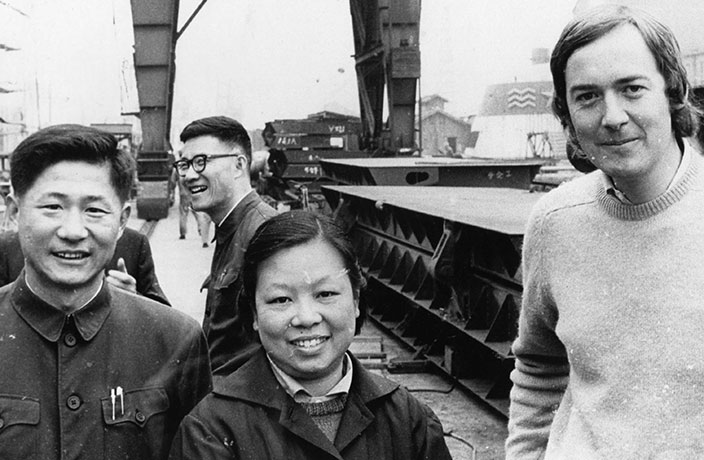

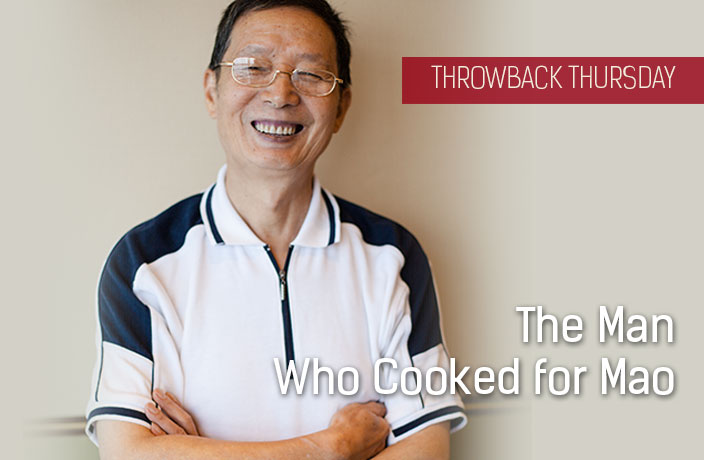













0 User Comments